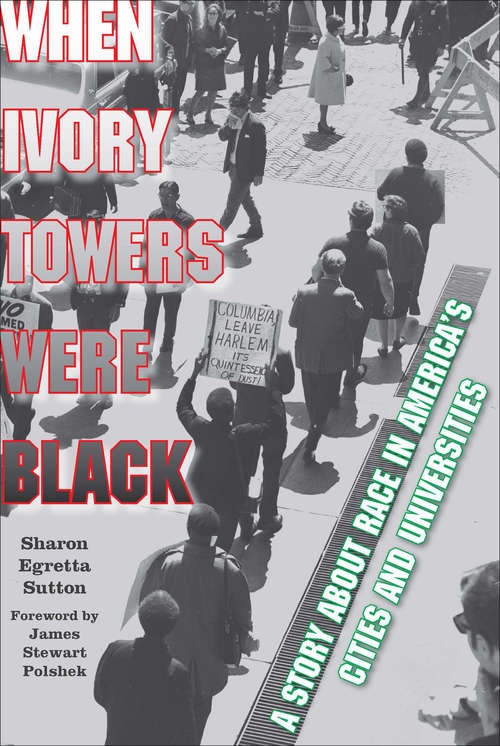When Ivory Towers Were Black: A Story about Race in America's Cities and Universities
By: and
Sign Up Now!
Already a Member? Log In
You must be logged into Bookshare to access this title.
Learn about membership options,
or view our freely available titles.
- Synopsis
- When Ivory Towers Were Black lies at the potent intersection of race, urban development, and higher education. It tells the story of how an unparalleled cohort of ethnic minority students earned degrees from a world-class university. The story takes place in New York City at Columbia University’s School of Architecture and spans a decade of institutional evolution that mirrored the emergence and denouement of the Black Power Movement. Chronicling a surprisingly little-known era in U.S. educational, architectural, and urban history, the book traces an evolutionary arc that begins with an unsettling effort to end Columbia’s exercise of authoritarian power on campus and in the community, and ends with an equally unsettling return to the status quo. When Ivory Towers Were Black follows two university units that steered the School of Architecture toward an emancipatory approach to education early along its evolutionary arc: the school’s Division of Planning and the university-wide Ford Foundation–funded Urban Center. It illustrates both units’ struggle to open the ivory tower to ethnic minority students and to involve them, and their revolutionary white peers, in improving Harlem’s slum conditions. The evolutionary arc ends as backlash against reforms wrought by civil rights legislation grew and whites bought into President Richard M. Nixon’s law-and-order agenda. The story is narrated through the oral histories of twenty-four Columbia alumni who received the gift of an Ivy League education during this era of transformation but who exited the School of Architecture to find the doors of their careers all but closed due to Nixon-era urban disinvestment policies. When Ivory Towers Were Black assesses the triumphs and subsequent unraveling of this bold experiment to achieve racial justice in the school and in the nearby Harlem/East Harlem community. It demonstrates how the experiment’s triumphs lived on not only in the lives of the ethnic minority graduates but also as best practices in university/community relationships and in the fields of architecture and urban planning. The book can inform contemporary struggles for racial and economic equality as an array of crushing injustices generate movements similar to those of the 1960s and ’70s. Its first-person portrayal of how a transformative process was reversed can help extend the period of experimentation, and it can also help reopen the door of opportunity to ethnic minority students, who are still in strikingly short supply in elite professions like architecture and planning.
- Copyright:
- 2017
Book Details
- Book Quality:
- Publisher Quality
- Book Size:
- 312 Pages
- ISBN-13:
- 9780823276134
- Related ISBNs:
- 9780823276127
- Publisher:
- Fordham University Press
- Date of Addition:
- 07/30/23
- Copyrighted By:
- Fordham University Press
- Adult content:
- No
- Language:
- English
- Has Image Descriptions:
- No
- Categories:
- History, Nonfiction, Art and Architecture, Education, Social Studies
- Submitted By:
- Bookshare Staff
- Usage Restrictions:
- This is a copyrighted book.
- Foreword by:
- James Stewart Polshek
Reviews
Other Books
- by James Stewart Polshek
- by Sharon Egretta Sutton
- in History
- in Nonfiction
- in Art and Architecture
- in Education
- in Social Studies
